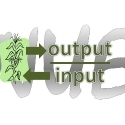02 May 2014
Crop Nutrient Balance - Manitoba - Nitrogen
Manitoba crop N removals generally have been increasing over the past 40 years, particularly in 2013 (Figure 1). Inputs of N in the form of fertilizer, and legume fixation, have been increasing as well. In the past, practices such as intensive tillage and summerfallow were used more extensively, and promoted the utilization and depletion of the nitrogen contained in soil organic matter. A large fraction of the N excreted as manure is considered non-recoverable, owing to high rates of loss in the barn, in storage and during handling. The recoverable fraction is relatively small compared to the large inputs of fertilizer. Crop removal of N from Manitoba cropland involves diverse crops (Figure 2). The proportion removed by canola and soybeans has increased over time. The fraction of manure from hogs and poultry is increasing over time. Since hog and poultry manures are more recoverable, the two sources account for an even greater fraction of recoverable manure (Figure 3).
Figure 1. Nitrogen inputs to cropland include legume N fixation, recoverable manure and fertilizer, shown as stacked areas summing to the total input. Removal by harvested crops is shown by the vertical bars. The units are kilograms of N per hectare of total cropland. Non-recoverable manure N is mainly left on pasture or lost to the air, and is not part of the cropland nutrient balance.
Figure 2. Nitrogen removed by harvest of major crops. Stacked areas sum to removal by these listed crops.
Figure 3. Nitrogen in manure, as-excreted and recoverable, from cattle, hogs and poultry.



